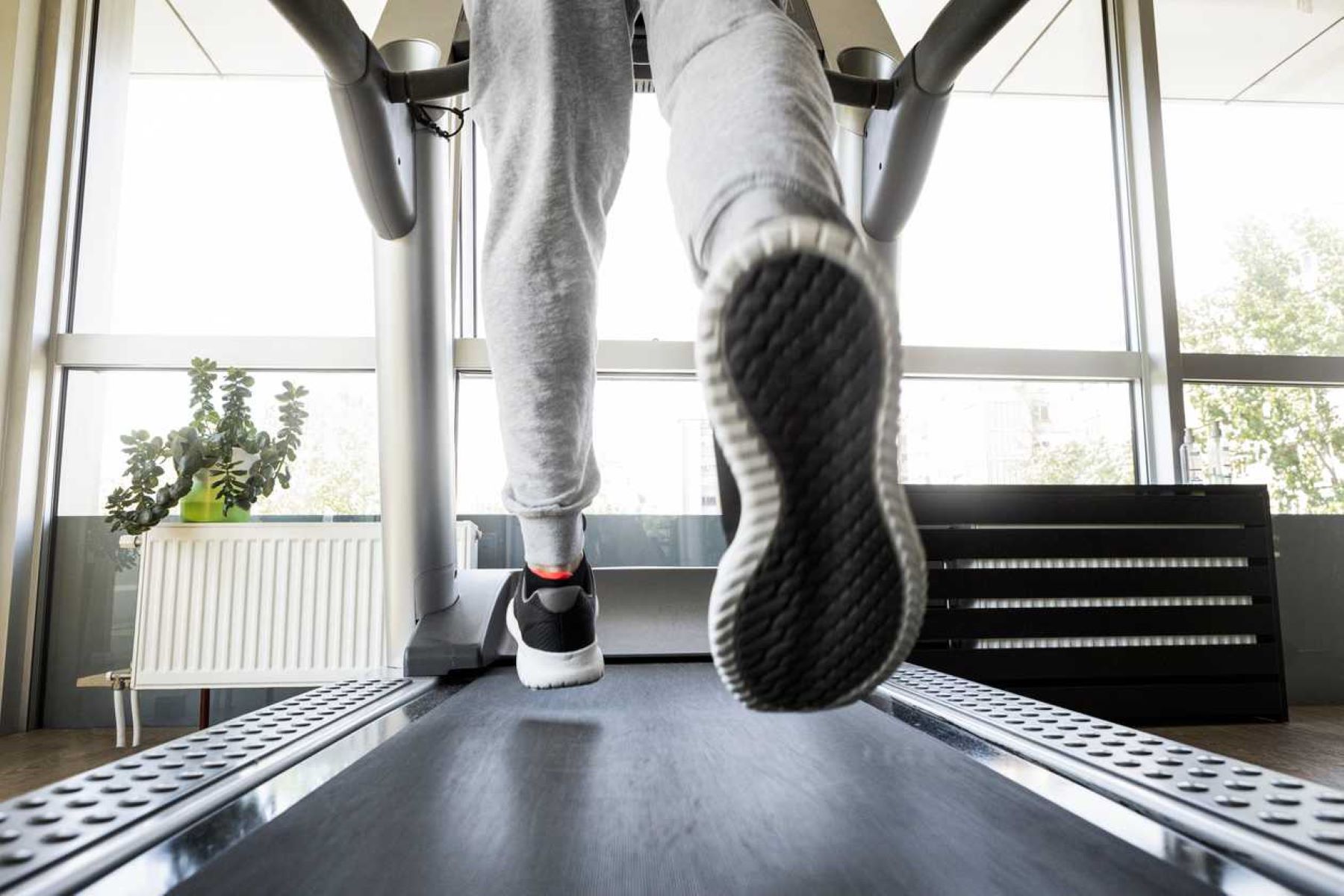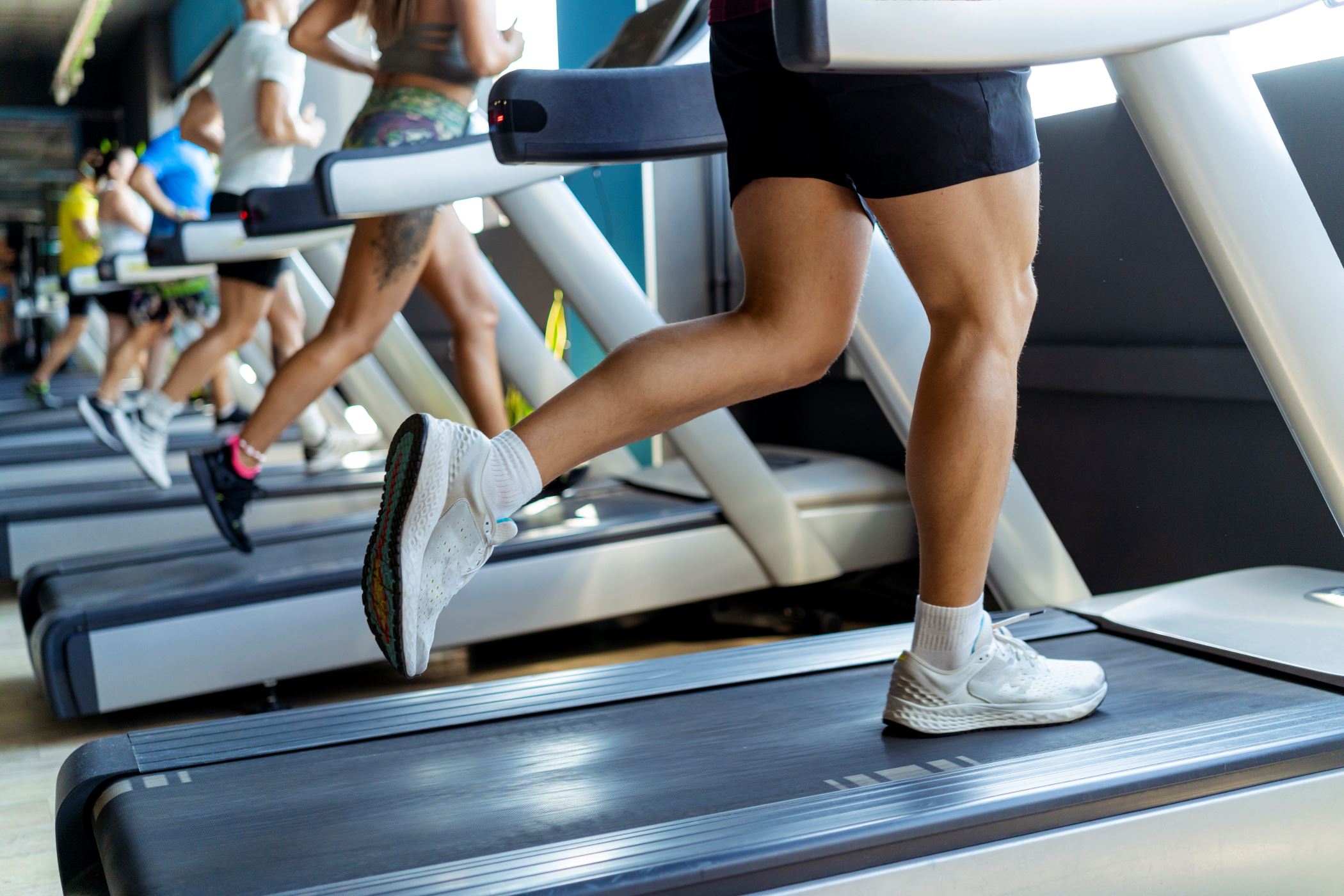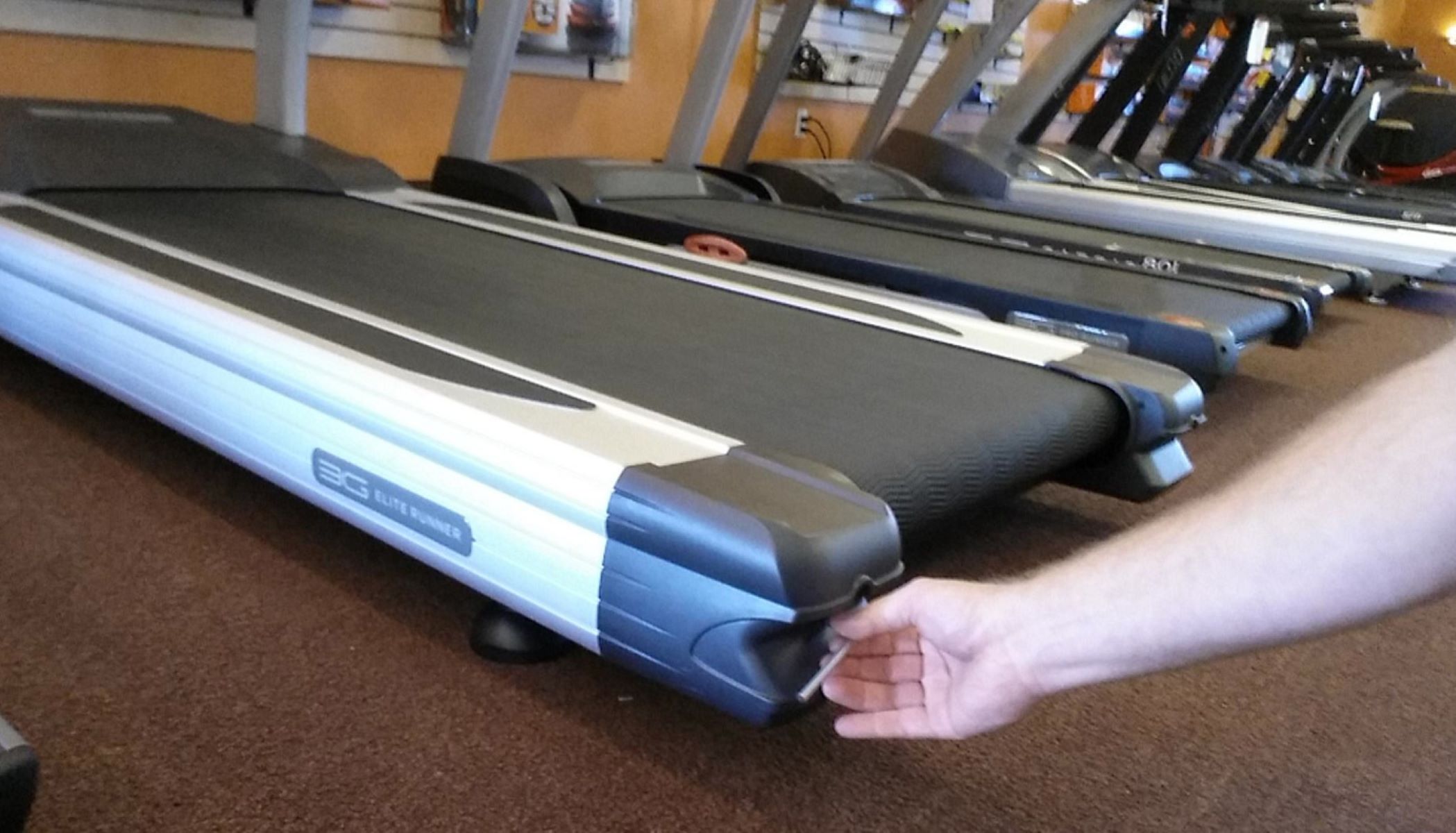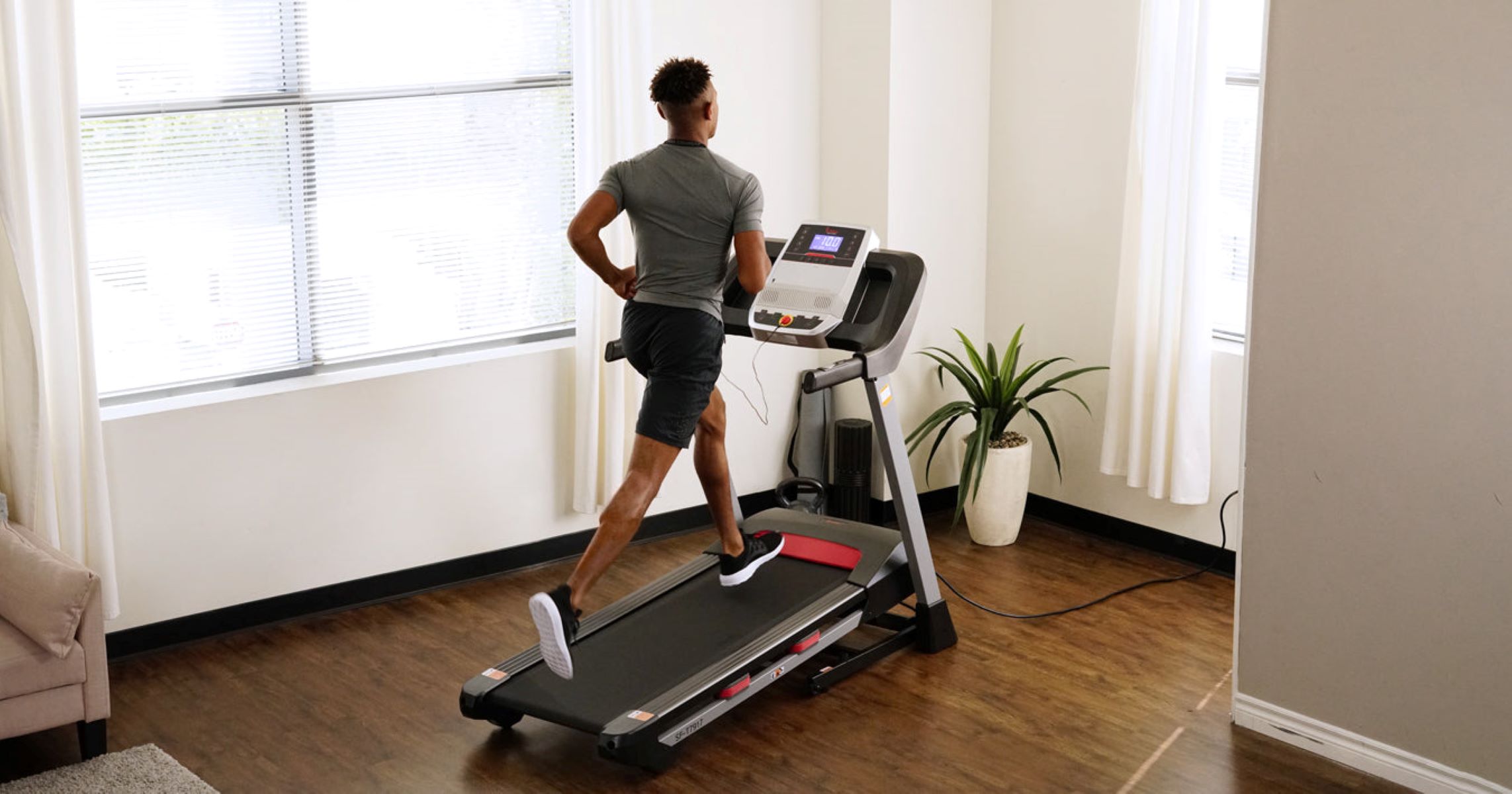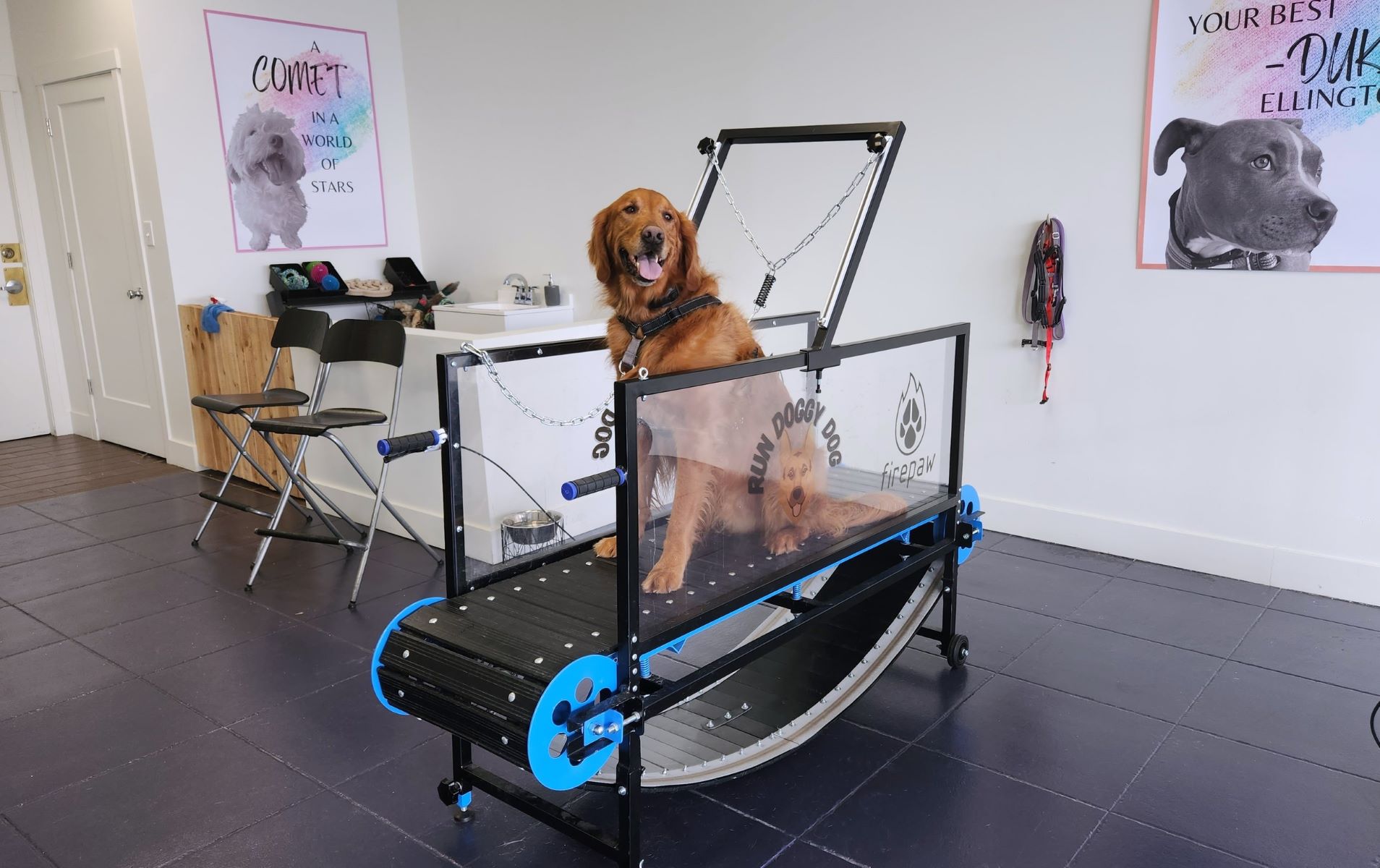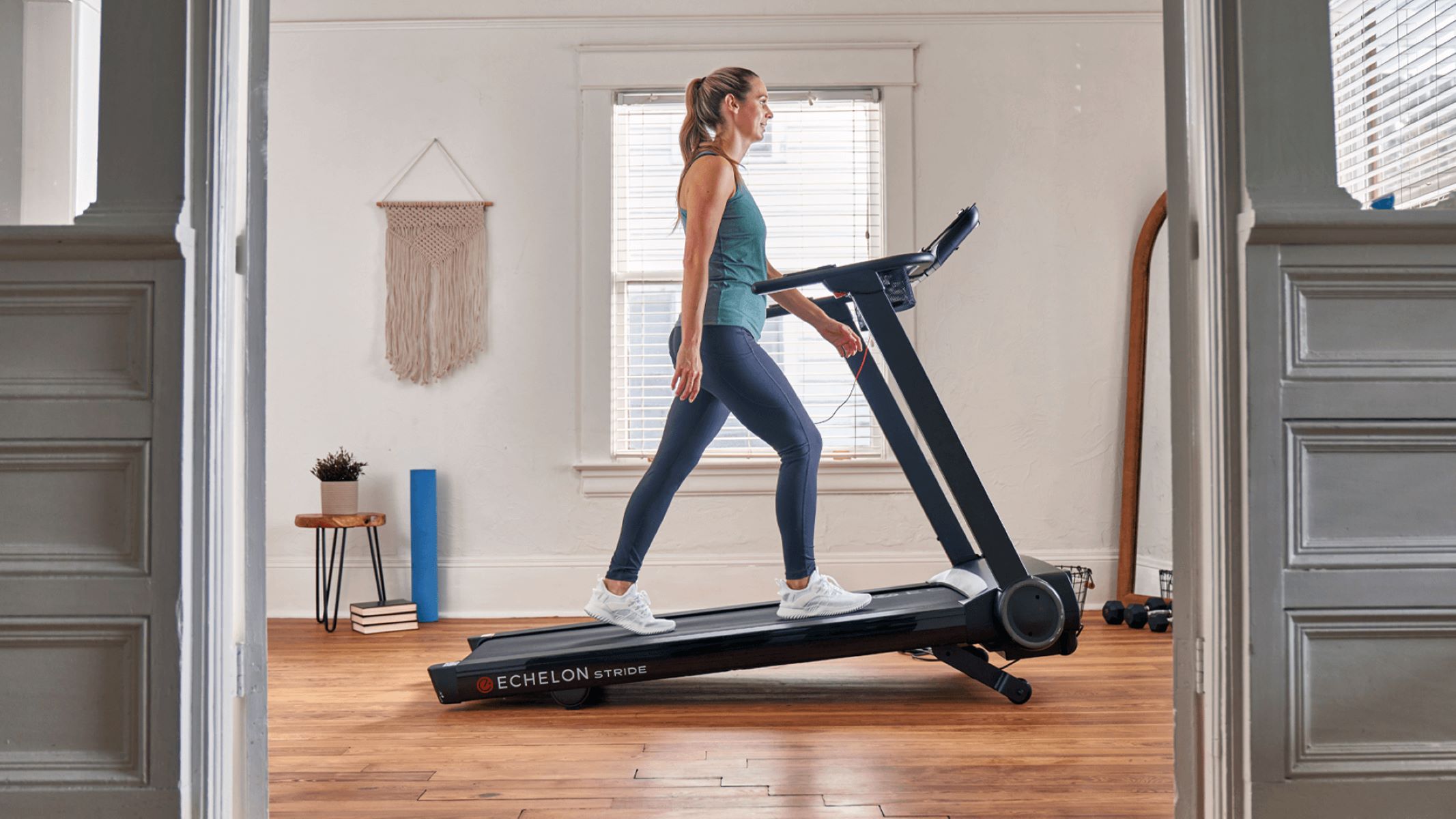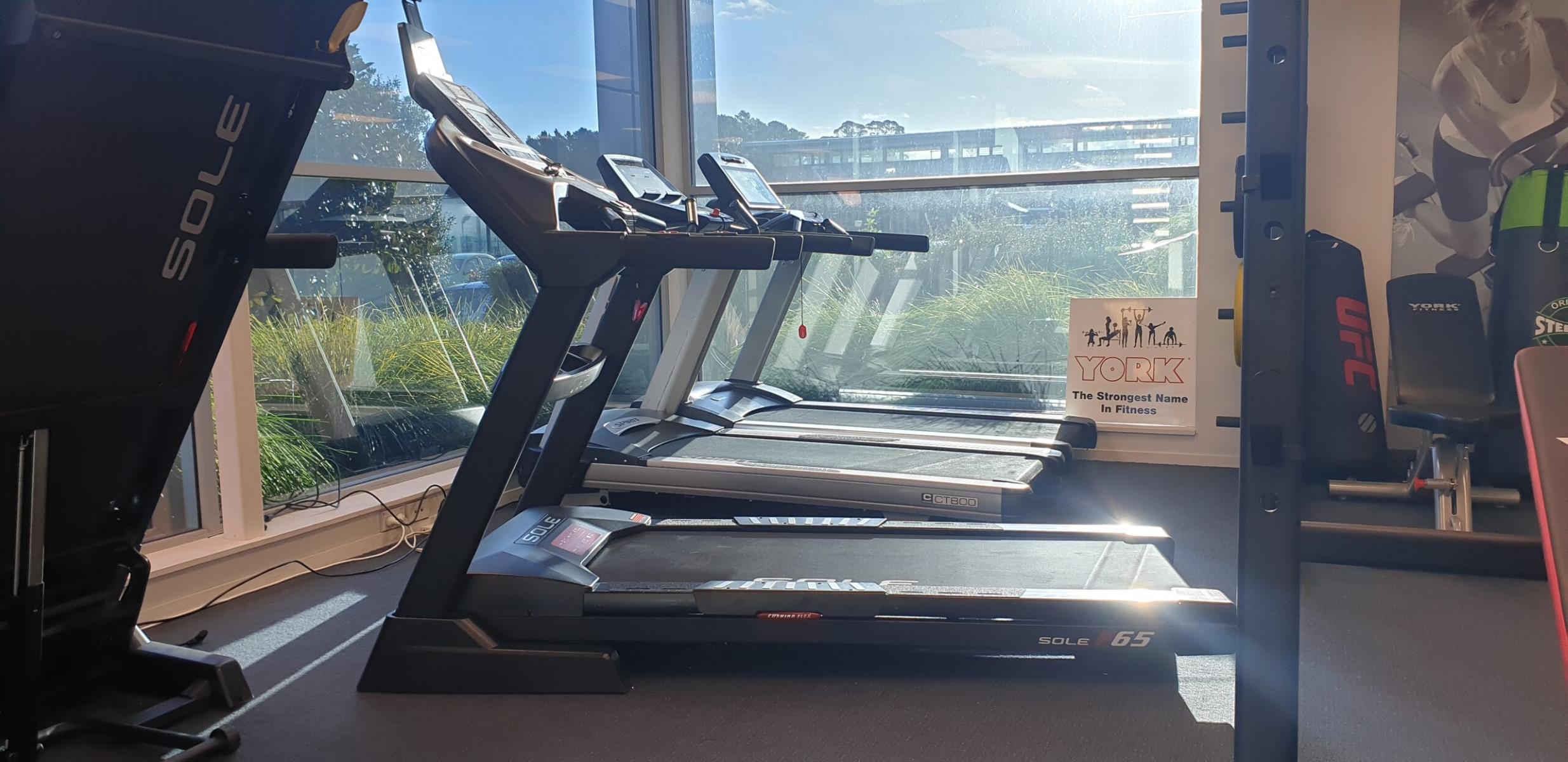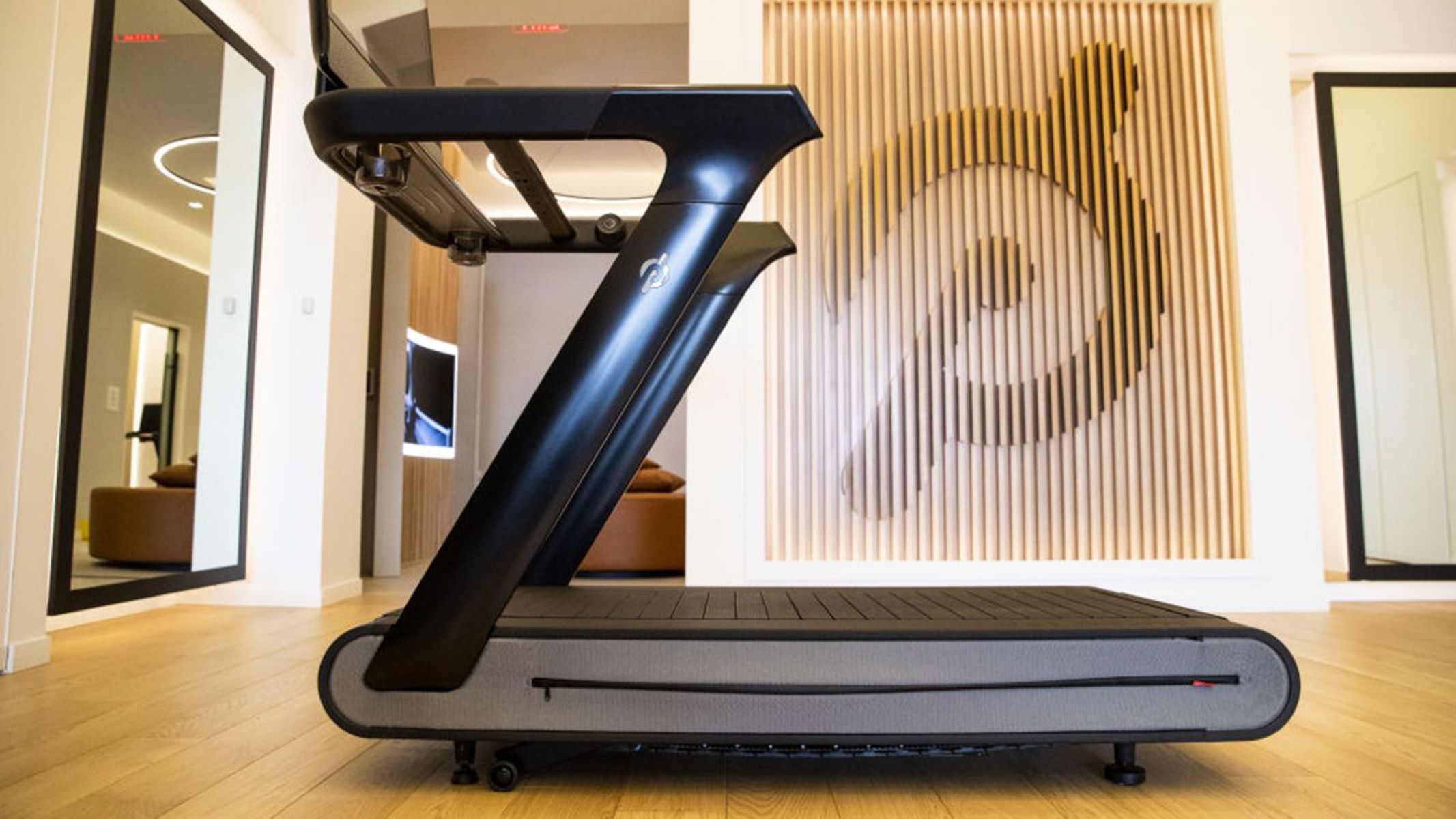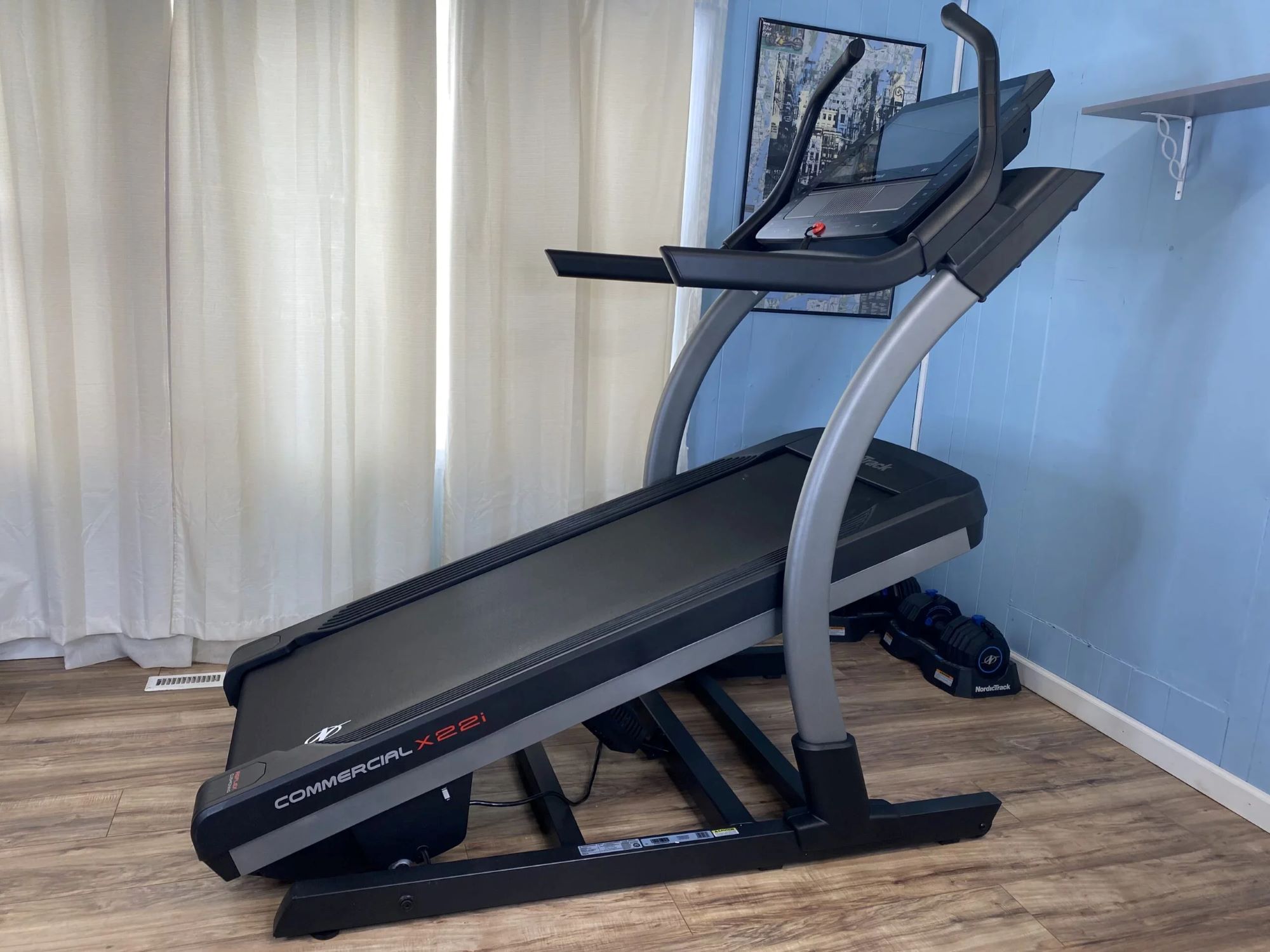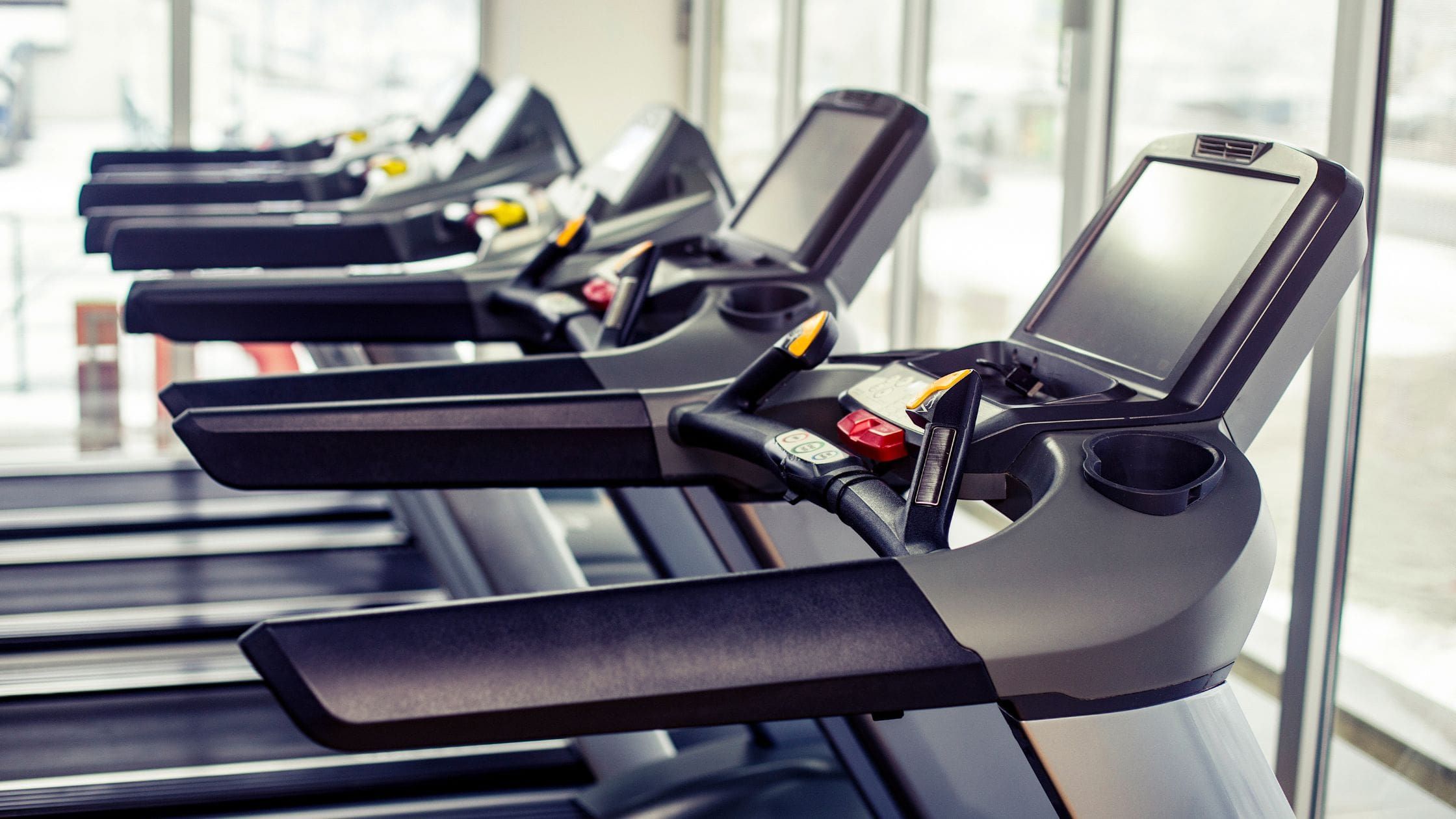

Featured
How Long Does Treadmill Last
Modified: August 19, 2023
Discover how long a treadmill lasts and why the featured treadmills are built to withstand heavy usage, ensuring durability for years to come.
Introduction
A treadmill is a popular fitness equipment choice for individuals looking to stay active and maintain an exercise routine from the comfort of their own homes. Whether you’re a dedicated runner or simply trying to squeeze in some cardio, a treadmill can be a valuable addition to your fitness regimen.
However, like any piece of machinery, treadmills have a limited lifespan. Understanding how long a treadmill lasts can help you make an informed decision when purchasing one and also ensure you properly maintain and care for it throughout its lifespan.
Several factors can influence the longevity of a treadmill. Build quality, frequency and intensity of use, and maintenance and care are key factors to consider. By understanding these factors, you can ensure that your treadmill remains in good working condition for as long as possible.
In this article, we will delve into the various factors that can affect the lifespan of a treadmill and provide tips on how to extend its longevity. Remember, the lifespan of a treadmill can vary depending on these factors, so it’s essential to take them into account when choosing and maintaining your treadmill.
Factors Affecting the Lifespan of a Treadmill
Several key factors can significantly impact the lifespan of a treadmill. Understanding these factors can help you make an informed decision when purchasing a treadmill and ensure that you take the necessary steps to extend its lifespan:
- Build Quality and Durability: The build quality and durability of a treadmill play a crucial role in determining its lifespan. Treadmills made with high-quality materials and solid construction tend to last longer. Look for treadmills that have sturdy frames and durable components to ensure longevity.
- Frequency and Intensity of Use: How often and how intensely you use your treadmill can affect its lifespan. If you’re an avid runner who logs several miles every day, your treadmill will experience more wear and tear compared to someone who uses it for light walking a few times a week. Consider the maximum weight capacity and the recommended daily usage of the treadmill to ensure it can handle your fitness routine.
- Maintenance and Care: Proper maintenance and care are vital for extending the lifespan of a treadmill. Regularly cleaning the machine, lubricating the belt, and tightening any loose bolts or screws can help prevent premature wear and breakdown. Follow the manufacturer’s maintenance guidelines and consult the user manual for specific instructions on how to care for your treadmill.
- Environment and Climate: The environment in which the treadmill is used can also impact its lifespan. Excessive heat, humidity, or dust can be detrimental to the internal components of the machine. It’s essential to place the treadmill in a well-ventilated area and keep it away from direct sunlight or areas prone to moisture accumulation.
- User Weight: The weight of the user can affect the lifespan of the treadmill. If the treadmill is consistently used by individuals who are significantly heavier than its recommended weight capacity, it can cause increased stress on the motor, frame, and other components, leading to premature wear and damage.
By considering these factors and taking appropriate measures, you can maximize the lifespan of your treadmill and enjoy its benefits for years to come. In the next sections, we will delve deeper into maintenance tips and signs of a worn-out treadmill to help you keep your machine in optimal condition.
Build Quality and Durability
The build quality and durability of a treadmill are essential factors to consider when assessing its lifespan. A well-built treadmill can withstand the rigors of regular use, providing reliable performance for an extended period of time.
When evaluating the build quality of a treadmill, pay attention to the frame, motor, and other key components. Look for a treadmill with a sturdy frame constructed from high-quality materials such as steel or aluminum. Avoid treadmills with flimsy frames that may not provide adequate stability and support.
The motor is another crucial component to consider. A powerful and durable motor ensures smooth operation and longevity. Look for treadmills with motors that have sufficient horsepower to handle your intended usage. Consider the motor’s continuous-duty rating, indicating the power it can sustain over an extended period of time.
In addition to the frame and motor, examine the quality of other components such as the running belt and rollers. A durable running belt made from high-quality materials can withstand continuous use and minimize wear. Similarly, durable rollers ensure smooth motion and reduce strain on the motor.
When choosing a treadmill, it’s helpful to read customer reviews and expert opinions to gauge the build quality and durability of a specific model. Look for brands and models known for their robust construction and positive feedback from users.
While a treadmill with superior build quality may come with a higher price tag, it can offer better value in the long run. Investing in a well-built and durable treadmill can save you money on repairs and replacements down the line.
To ensure the longevity of a treadmill’s build quality and durability, it is crucial to follow the manufacturer’s guidelines for usage and maintenance. Regularly inspect the treadmill for any signs of wear and tear and promptly address any issues that may arise. Proper lubrication of the belt, regular tightening of bolts and screws, and periodic cleaning can help maintain the treadmill’s build quality and performance.
By prioritizing build quality and durability when selecting a treadmill and properly maintaining it, you can enjoy reliable performance and maximize the lifespan of your equipment.
Frequency and Intensity of Use
The frequency and intensity of use are key factors that can significantly impact the lifespan of a treadmill. The more frequently and intensely a treadmill is used, the more wear and tear it will incur over time.
If you’re someone who plans to use your treadmill on a daily basis, it’s important to choose a model that is designed for heavy use and has a high maximum weight capacity. This ensures that the treadmill can handle the demands of regular and intense workouts without compromising its performance or longevity.
Consider your fitness goals and workout routine when determining the appropriate frequency and intensity of use for your treadmill. If you’re an avid runner or engage in high-intensity interval training (HIIT) workouts, your treadmill will experience more stress compared to someone who uses it for light walking or jogging.
It’s essential to find a balance between using your treadmill to achieve your fitness goals and not overloading it. Excessive or improper use can lead to accelerated wear and tear, increasing the likelihood of breakdowns and the need for repairs.
Take into account the recommended daily usage and specific guidelines provided by the manufacturer. Adhering to these guidelines can help you avoid potential issues and extend the lifespan of your treadmill.
In addition to considering the frequency and intensity of use, it’s important to pay attention to the duration of each workout session. Prolonged sessions of intense use can put excessive strain on the treadmill’s motor, belt, and other components. Consider taking breaks during your workouts to allow the treadmill to cool down and reduce the overall stress on the machine.
Regular maintenance is crucial when using a treadmill frequently and intensively. Lubricating the belt, inspecting the machine for any signs of wear, and following the manufacturer’s maintenance recommendations are all essential steps to ensure optimal performance and longevity.
Remember, while it’s important to challenge yourself and make the most of your treadmill workouts, it’s equally vital to use the machine responsibly and within its designated limits. By finding the appropriate balance and taking proper care of your treadmill, you can enjoy consistent performance and extend its lifespan.
Maintenance and Care
Proper maintenance and care are crucial for ensuring the longevity of your treadmill. Regular maintenance not only helps prevent premature wear and tear but also keeps the machine running smoothly and efficiently.
Here are some essential maintenance and care tips to keep in mind:
Cleanliness: Regularly cleaning your treadmill is a simple yet effective way to maintain its performance and extend its lifespan. Wipe down the surface of the treadmill after each use to remove any sweat or debris. Use a mild cleaning solution and a soft cloth to clean the console, handles, and other areas. Additionally, periodically vacuum or use a gentle brush to remove any dust or dirt that may have accumulated under the belt and around the motor area.
Lubrication: Proper lubrication of the treadmill belt is vital for its smooth operation. Follow the manufacturer’s instructions for lubrication frequency and use a silicone-based lubricant recommended for treadmills. Applying lubricant to the underside of the running belt helps reduce friction and wear, ensuring the belt lasts longer and the motor operates efficiently.
Belt Tension and Alignment: Check the tension and alignment of the running belt regularly. An overtightened or loose belt can cause unnecessary strain on the motor and other components. Refer to the treadmill’s user manual for specific instructions on adjusting the belt tension and alignment. Remember to power off and unplug the treadmill before making any adjustments.
Bolt and Screw Tightening: As you use your treadmill, the vibrations and movement can cause bolts and screws to become loose. Periodically inspect and tighten any loose bolts or screws to maintain the stability and integrity of the machine. Be cautious not to overtighten, as this can cause damage to the components. Again, refer to the user manual for guidance on specific tightening procedures.
Protective Mat: Consider placing a protective mat underneath your treadmill. This can help protect your flooring from any potential damage caused by the treadmill’s weight and movement. Additionally, a mat can help absorb some of the vibrations, reducing noise and minimizing stress on the machine.
Professional Servicing: While regular maintenance can go a long way in preserving the lifespan of your treadmill, it can be beneficial to have professional servicing done periodically. A professional technician can perform a thorough inspection, make any necessary adjustments, and identify any potential issues before they become major problems.
By following these maintenance and care tips, you can ensure that your treadmill stays in optimal condition and lasts for years to come. Regular cleaning, proper lubrication, belt tension and alignment checks, bolt tightening, and occasional professional servicing are all essential components of a comprehensive maintenance routine.
Signs of a Worn-Out Treadmill
As treadmills age and undergo regular use, they may start to show signs of wear and tear. Recognizing these signs is crucial in determining when it might be time to repair or replace your treadmill. Here are some common signs that indicate a worn-out treadmill:
- Noise and Vibration: If you notice an increase in noise or vibrations during your workouts, it could be a sign of worn or misaligned components. Excessive noise and vibration may indicate loose belts, worn bearings, or other issues that may need to be addressed.
- Inconsistent Performance: A worn-out treadmill may exhibit inconsistent or erratic performance. This can manifest as sudden speed changes, unexpected stops, or uneven belt movement. These issues can be indicators of mechanical problems or belt slippage, which may require professional attention.
- Excessive Belt Wear: Take a close look at the treadmill belt. If you notice significant fraying, cracking, or thinning, it may be time to replace it. An excessively worn belt can affect the overall performance and safety of the treadmill.
- Reduced Stability: A worn-out treadmill may feel less stable during use. If you experience excessive rocking or wobbling while walking, jogging, or running, it could indicate issues with the frame or base. It’s important to address stability concerns promptly to prevent accidents or further damage.
- Electrical Problems: If you encounter electrical issues such as failing displays, malfunctioning buttons, or sudden power surges or blackouts, it could be a sign of underlying electrical component wear. Electrical problems often require professional assistance to diagnose and fix.
- Lack of Smooth Operation: A worn-out treadmill may not feel as smooth and consistent in its operation as it once did. This can manifest as jerky or uneven belt movement, resistance changes, or a feeling of instability. Such issues may indicate internal mechanical wear or alignment problems.
If you notice any of these signs, it’s important to address them promptly. Continuing to use a worn-out treadmill can lead to further damage and potential safety hazards. Depending on the severity of the issues, it may be necessary to either repair or replace the treadmill.
Keep in mind that regular maintenance and proper care can help prevent many of these signs of wear and extend the lifespan of your treadmill. By following the manufacturer’s guidelines for usage, maintenance, and recommended inspections, you can minimize the likelihood of encountering significant problems and ensure that your treadmill remains in good working condition for as long as possible.
Extending the Lifespan of Your Treadmill
While treadmills do have a limited lifespan, there are steps you can take to maximize their longevity and keep them in optimal condition. By implementing these practices, you can extend the lifespan of your treadmill and enjoy its benefits for years to come:
- Follow Manufacturer’s Guidelines: It’s important to adhere to the manufacturer’s guidelines for usage, maintenance, and care. This includes weight limits, recommended usage times, and specific maintenance instructions. Following these guidelines ensures that you are using your treadmill in a way that is conducive to its longevity.
- Proper Lubrication: Regularly lubricating the running belt is crucial for smooth operation and minimizing friction. Refer to the user manual to determine the appropriate lubrication frequency and use a silicone-based lubricant specifically designed for treadmills.
- Regular Cleaning: Keep your treadmill clean by wiping it down after each use and periodically removing any dust or debris. Use a mild cleaning solution and a soft cloth to clean the console, handles, and other surfaces. Also, don’t forget to clean under the belt and around the motor area to prevent the buildup of dirt and dust.
- Monitor and Adjust Belt Tension: Check the tension of the running belt regularly. It should be tight enough to prevent slippage but not too tight to cause extra stress on the motor and other components. Refer to the user manual for instructions on adjusting the belt tension, and make adjustments as needed.
- Check and Tighten Bolts and Screws: As part of your regular maintenance routine, inspect the treadmill for any loose bolts or screws. Tighten them as necessary to ensure the stability and integrity of the machine. Avoid overtightening, as this can lead to damage. Take particular care to check the bolts and screws holding the console, handrails, and side rails in place.
- Avoid Excessive Weight: Be mindful of the weight limits specified by the manufacturer. Excessive weight can put excessive stress on the motor, belt, and other components, leading to premature wear and tear. If multiple individuals will be using the treadmill, ensure that they fall within the weight limit.
- Protective Mat: Consider using a protective mat underneath your treadmill. This helps protect your flooring from any potential damage caused by the weight and movement of the machine. Additionally, a mat can help reduce vibrations and noise, extending the lifespan of the treadmill.
- Keep the Environment Suitable: Properly place your treadmill in a well-ventilated area, away from direct sunlight and excessive heat or moisture. Avoid placing the treadmill on carpeted surfaces, as this can obstruct airflow and cause overheating. Maintaining a suitable environment for your treadmill helps prevent damage to the internal components.
- Regular Inspections: Perform visual inspections to check for any signs of wear and tear, including frayed belts, worn rollers, or loose components. Address any issues promptly to prevent further damage or accidents. If you notice any significant issues or are unsure about the condition of your treadmill, consider consulting a professional technician for a comprehensive inspection.
By following these best practices and regularly maintaining your treadmill, you can greatly extend its lifespan and enjoy many years of reliable use. Remember, prevention is key when it comes to keeping your treadmill in top shape, so incorporate these practices into your routine to keep your machine running smoothly for as long as possible.
Conclusion
A treadmill is a valuable investment in your fitness journey, providing convenience and accessibility for your workouts. Understanding the factors that affect the lifespan of a treadmill and implementing proper maintenance and care practices can significantly extend its longevity.
Factors such as build quality and durability, frequency and intensity of use, and maintenance and care all play a role in determining how long your treadmill will last. By choosing a treadmill with solid construction and high-quality components, using it within the recommended usage limits, and providing regular maintenance and care, you can ensure that your treadmill stays in optimal condition for as long as possible.
Signs of a worn-out treadmill, such as excessive noise and vibration, inconsistent performance, belt wear, reduced stability, electrical problems, and lack of smooth operation, should not be ignored. It’s important to address these signs promptly to prevent further damage and potential safety hazards.
By following the manufacturer’s guidelines, regularly lubricating and cleaning your treadmill, monitoring belt tension, tightening bolts and screws, and creating a suitable environment for your machine, you can maximize its lifespan and enjoy years of reliable use.
Ultimately, proper maintenance and care are key to ensuring the longevity of your treadmill. By incorporating these practices into your routine, you can make the most out of your investment and continue to enjoy the benefits of a functional and reliable treadmill.
